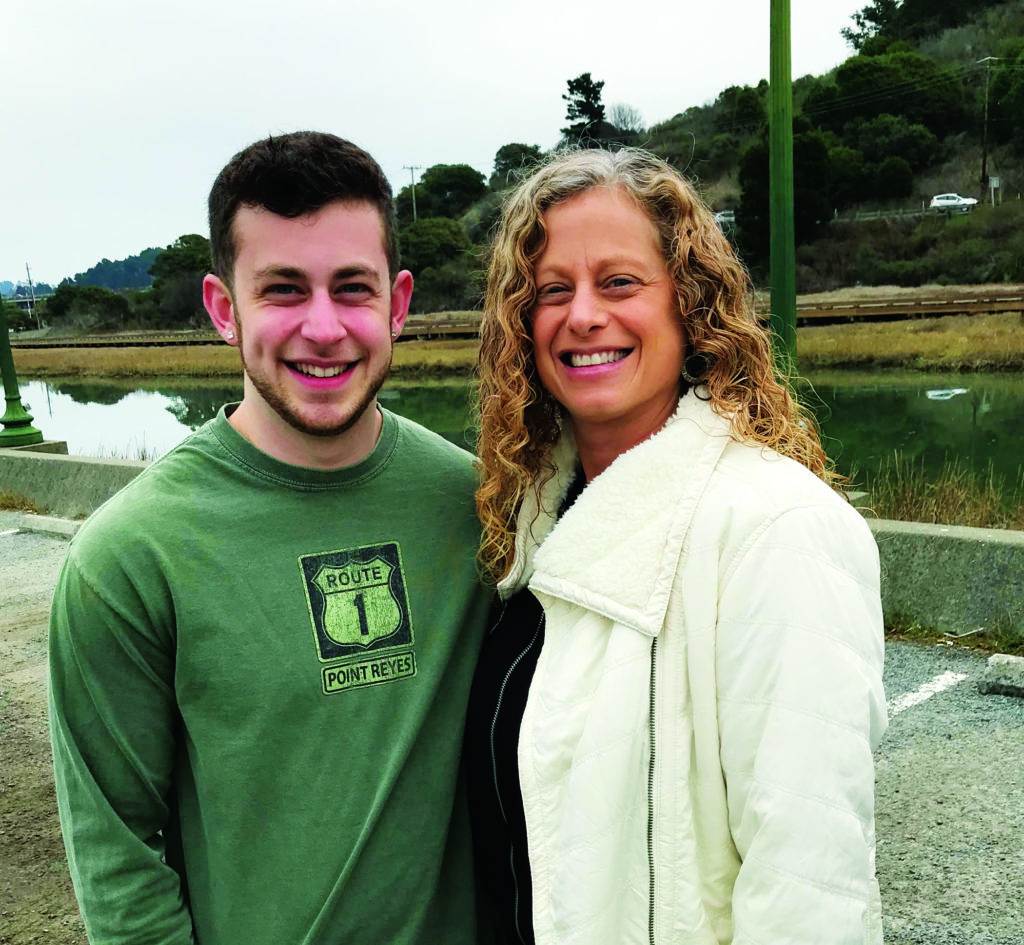Love You for Who You
Are, Not Your Parts
BY JANNA BARKIN
My son is transgender. This means he was assigned female at birth because he was born with female body parts. The “F” was marked on the birth certificate and we went on our way.
There was not one aha! moment when I knew my child was transgender. Early in the life of our youngest child, my husband and I were keenly aware that Amaya was not your typical girl, or even the average tomboy. The signs were always there, from the way Amaya insisted upon being dressed to the so-called “boy toys” he chose to play with, to the way he carried himself and moved his body. My understanding and acceptance developed over a long period and tracked closely with my child’s understanding and acceptance of himself.
Before we go on, an important note about pronouns. I will use male pronouns for Amaya consistently throughout this piece even though our family and community used female pronouns for Amaya until he asked us to switch at age 14.
Amaya had a vivid imaginary play life when he was very young. When he was in his imaginary world he would interact with all sorts of characters. He preferred to play alone in his imaginary world but we could hear him and what we heard was often fascinating! His best friend in that world was a boy named Rocco, and Amaya would talk out loud to him and to other imaginary friends when he thought nobody was listening. Unlike his older sister who always chose frilly dresses or tutus, Amaya played dress-up in superhero gear or a jacket and tie and other stereotypical boy stuff.
When Amaya was about 3 I watched unnoticed as he played with his imaginary friend in our living room. He had a bunch of his toys scattered around, among them some baby dolls, a few GI Joes, a selection of trucks, and several stuffed animals. In the midst of it all he was singing to himself, “I wish to be a grampa, a grampa, I wish to be a grampa.” I thought to myself, “Did I hear that right?” I listened as his singing continued: “I wish to be a grampa.” I didn’t understand. He was 3. Didn’t he know by now that girls grew up to be grandmas? Once I interrupted his play and said something: “Did you know that girls grow up to be grandmas and boys grow up to be grandpas?” Amaya said, “I’m a boy.” I just smiled and said, “Well, boys have a penis and girls have a vagina.” We talked a bit more, acknowledging the parts he had, concluding together that he was a girl.

I discounted this incident, which was perhaps his very first outward affirmation of his inner knowing. I told him it was perfectly fine to be a girl who likes boy things and pretends to be a boy but I did not tell him it was possible he was a boy in a girl body. I hadn’t yet arrived at that insight, much less gathered the words to explain it. I now know his gender is and always was male—he’s always been my son.
When I first discounted his early affirmations it was a pivotal moment for Amaya as he internalized what I said. He was subsequently unable to talk about being a boy until years later after much inner turmoil and counseling. At that early time in my child’s life he was developing an inner sense of gender.
Up until recently society taught that gender was determined by external look and genitalia. It is now increasingly common to regard gender as having three components: biology, expression, and identity. Gender expression is the way one presents oneself to the outside world. This includes choices in clothes, style, hair, activities, and communication. Gender biology refers to what we typically mean when we use the term sex to describe the gender of the newborn—the outer body parts. However, there is much more to gender biology than the external genitalia visible at birth. Gender biology includes DNA, chromosomes, hormones, and brain structure and functions. Gender identity is defined as the inner held sense of who one is with regard to gender.
The first two components can be changed. Expression is the easiest to change with a new haircut, different clothes, voice modulation. Biology can be shifted through medical interventions such as hormones and surgeries. Gender identity cannot be changed by outside intervention. Gender identity is not about what one wears or the body parts one has but rather how one feels on the inside.
Amaya is now a very happy young man attending college. He says, “It is hard for me to fathom that parents would be mad, disappointed, or resentful when a transgender child expresses their authentic self and entrusts their parents with that information. The sad truth is that the disappointment and resentment happen often. Knowing this I am more grateful than ever to have the support and unconditional love I do from my parents.”
His words remind me how important it is that we look beyond the surface to what’s inside. Through listening and learning I lovingly came to understand that he’s always been my son.
Janna Barkin is an author, educator, yoga instructor, and mother whose youngest is transgender. She currently supports transgender youth and their families as a parent support group facilitator, blogger, workshop presenter, and parent coach. Her book He’s Always Been My Son (Jessica Kingsley Publishers) was a #1 bestseller on Amazon. HesAlwaysBeenMySon.com